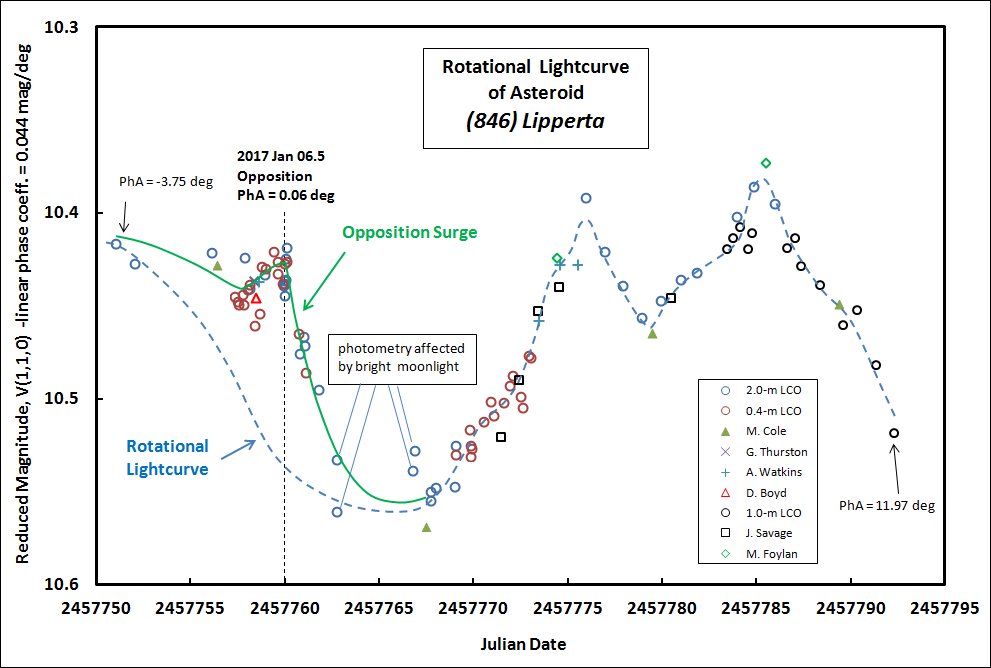
Dear Observer,
Please find attached an updated partial rotational lightcurve.
Actual lightcurve is available at:
http://britastro.org/asteroids/Project%20NeilBone/Lipperta_Latest_plots.htm
If the rotation period proves to be 68 days, then the object has spun just
175 degrees since we started this observing campaign. The amplitude of the
lightcurve is small at about 0.14 mag, which means that we can't necessarily
assume we are going to see a simple double maxima - double minima type.
Indeed, we already see a very distinctive feature by way of a narrow peak
lasting for only 35 degrees rotation (if the 68-d period is confirmed by our
work). This narrow peak will enable us to determine the true rotation period
with reasonable accuracy once it reappears on the next rotation (i.e. in 2
months hence).
The low amplitude and fading brightness (now >14.7V) means that you will
have to take a good number of images in a stable sky to achieve the
necessary absolute photometric accuracy. For each observing run, about 30
minute's or more of imaging should do the trick, I estimate. N.B. Smaller
scopes will require longer runs.
The UK weather forecast looks pretty bad for the next 5 days or so. I shall
persevere using the Las Cumbres Observatory scopes to fill in any potential
gaps in coverage.
Best wishes to all,
Richard
P.S. Apologies to Dave Storey - I have yet to process your images. Will get
back to you offline.
2017 January 30
